Film criticism techniques such as “social representation” and the similar technique of “social film history” help people understand how social issues are portrayed in one of the most persuasive forms of popular culture, film. These analysis techniques are applicable to many films, but they can be particularly useful when looking at films that reflect social issues, whether past or present. These techniques are used in this study of two films that deal with the conflict between the Koreas and their hope for reunification.
The two film criticism techniques differ in subtle ways. Social representation criticism can be used by people with a wide range of educational experience, but the results will differ from person to person based on each individual’s knowledge of the topic and films. The basic assumptions of this approach are that cinema has nationalistic origins or influences, films represent what is not commonly spoken, and there is no fixed national character.1 Social film history is similar to social representation, but it is more concerned with the historical role of film.2 This approach goes beyond social representation to work toward understanding the social experience of watching films and why people chose certain films to watch. Both social representation and social film history argue that a qualitative reading of a socially-oriented film will reveal the concerns or personality of society, whether contemporary or historical.
This article examines two South Korean films, Shiri, also known as Swiri, and Joint Security Area (JSA). Shiri and JSA are modern action films that address the contemporary Korean conflict. They achieved enormous success in South Korea because they reflect Korean societal values within an accessible action genre. Shiri is action-oriented in the American style, and appeals to people with a shorter attention span or to those who just want to forget everything but the action on the screen. JSA is more sophisticated. It requires greater attention because it constantly jumps back and forth in time, and it is more representative of Korean lifestyles.
SOUTH KOREAN CINEMA
Most studies on South Korean cinema are written in Korean, are histories of the national cinema, or address the market for South Korean films both within and outside its borders. More studies are needed because “the Korean cinema has been singularly unknown in the West—in effect it was a ‘hermit cinema.’”3 This has resulted in a distinct shortage of literature. Thus, viewers are often left to their own devices to learn about and interpret South Korean films.
The success of these films has led researchers to discuss the economic impact and question the nature of national films.4 Much of the literature about Korean cinema comes from both Korean and film online magazines. The amount of available refereed research on the Korean cinema is limited and hard to locate. “Anyone who has tried to locate English-language books, articles, or encyclopedia entries on Korean cinema must surely have met with great frustration.”5 One major and highly recommended text cites a large number of Korean-language sources, which emphasizes the lack of relevant literature available to English-language teachers and researchers.6 This is why social representation and social film history are so useful here, because they provide teachers and researchers a guide for understanding foreign cultures.
The South Korean film industry has grown in the last decade. The films made before World War II have largely been lost or destroyed by the Japanese military, which wanted to rid Korea of its Korean heritage. Adults are generally aware of the early films through stories they have read about them. The South Korean government has actively sought to protect the national film industry, which has been both good and bad for the public. A requirement that cinemas show at least 146 days of Korean films each year has secured the making of a number of national films. On the downside, the government has been active in censoring films. For decades, films could not address issues like the “once-taboo subject of inter-Korean relations [political, economic, and cultural],” or homosexuality.7 During the last five or so years, South Koreans have seen a loosening of censorship, which has resulted in the production of films like Shiri and JSA that have aggressively tackled the problems between North and South.
Shiri and JSA are also significant because they proved national films could succeed in South Korea, where national films were recently less popular than American films. Shiri and JSA became the South Korean blockbusters that successfully competed with imported films like Titanic. JSA brought in a South Korean record of $27.5 million in 2000. During that same year, the South Korean historical action film Bichunmoo knocked Mission Impossible II out of first place in ticket sales.8 Some Korean film directors are approaching film directing with a business mindset. Kang Jae Kyu, the director of Shiri, who was trained at New York University, approaches his occupation as a real job. “For me, a film is a commercial product. We have to make films that appeal to the people.” 9 Shiri’s and JSA’s popularity came from their combination of American-influenced action and special effects in the context of good Korean actors in Korean locations. As evidence of their growth, Shiri and JSA were shown in other Asian countries and in the United States. They are available in the United States with subtitles, mostly in DVD format.
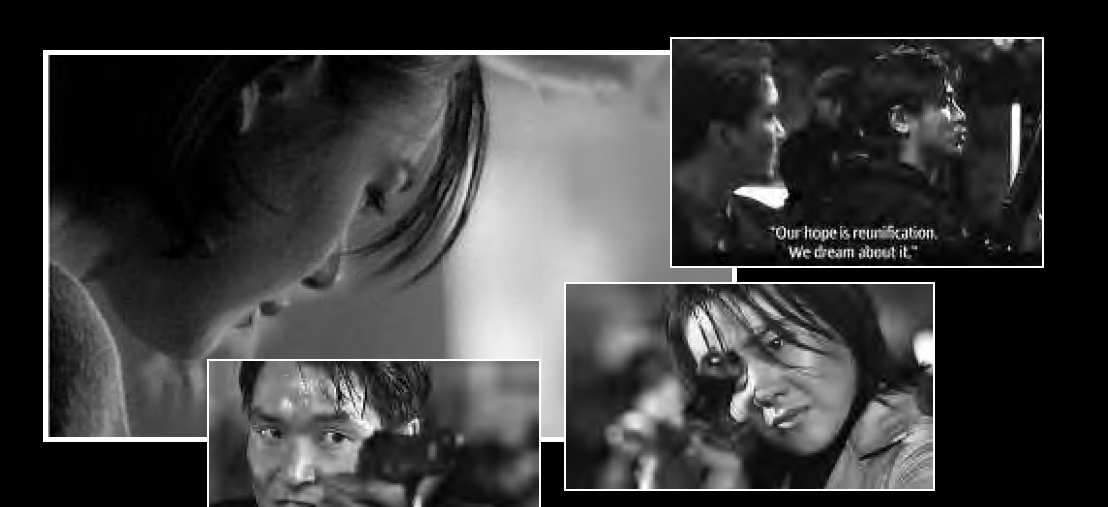
Analysis of Films: This section begins with a story description and analysis of Shiri, then JSA, and ends with a comparison of the two films.
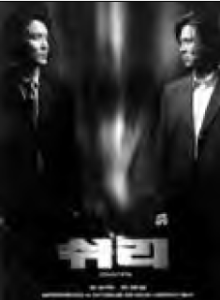
SHIRI is the story of a South Korean government agent, Ryu, who is trying to capture an elusive, female North Korean sniper, Hee, who killed a number of important South Koreans. Ryu works with another agent, Lee, and Ryu is engaged to Hyun, who operates a pet fish store. The cultural meanings of various fish are discussed at different points throughout the film. Sometimes in Korean culture, fish represent a superior determination or effort.
Ryu and Lee have trouble catching Hee, who seems always to be a step ahead of them. Each begins to suspect the other of being a traitor because neither Ryu nor Lee can explain how Hee is getting her information. Part of the problem is that Hee has had her appearance altered via plastic surgery—Hyun, Ryu’s fiancée, is really Hee. She has been getting secret information by providing fish fitted with miniature bugging devices to Ryu’s office. Ryu is unaware of what is really going on.
The truth is eventually uncovered, which leads to a showdown at an exhibition soccer game between the two Koreas. Hee and her associates, who are from the renegade Eighth Special Forces of North Korea, intend to detonate a bomb at the soccer game. They hope this will lead to a civil war and the eventual unification of the countries. After Hee realizes the bomb will not explode, she tries to assassinate one of the presidents. She is foiled by Ryu, who by now knows his fiancée is Hee, and kills her.
Hee fell in love with Ryu before the audience meets her. She realizes it is too late to change her life when she must go to the soccer game —because otherwise she will be killed by her own people. Ryu learns at the end of the film that Hee sent a message warning him about the plot to set off the bomb.
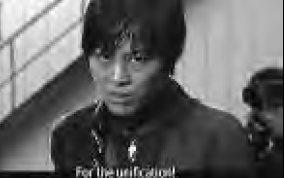 Shiri deals with national loyalty, friendship, and love. National loyalty is prominent because it drives the actions of Ryu and Hee who, with Lee, risk their lives for their respective countries. The tension between North and South Korea frames the story. The title, Shini, refers to an aboriginal Korean fish that can-not travel between the Koreas because of the division. This reflects the prominence of the problem for these countries. The North Koreans repeatedly speak of unification. The phrase “For the unification” is constantly exchanged between them. The phrase is also used when a trapped North Korean commits suicide. Before she takes a poisonous pill, she utters the phrase to the South Koreans. The North Korean soldiers are willing to die for reunification, which is their guiding principle. The renegade North Koreans sometimes speak of their own politicians as being corrupt and unwilling to try to reunify through military action. Ryu tries to explain to Park, Hee’s superior, that the South wants reunification, but that it will happen at the right time and cannot be rushed. The South Koreans are risking their lives too, but as defenders, not aggressors.
Shiri deals with national loyalty, friendship, and love. National loyalty is prominent because it drives the actions of Ryu and Hee who, with Lee, risk their lives for their respective countries. The tension between North and South Korea frames the story. The title, Shini, refers to an aboriginal Korean fish that can-not travel between the Koreas because of the division. This reflects the prominence of the problem for these countries. The North Koreans repeatedly speak of unification. The phrase “For the unification” is constantly exchanged between them. The phrase is also used when a trapped North Korean commits suicide. Before she takes a poisonous pill, she utters the phrase to the South Koreans. The North Korean soldiers are willing to die for reunification, which is their guiding principle. The renegade North Koreans sometimes speak of their own politicians as being corrupt and unwilling to try to reunify through military action. Ryu tries to explain to Park, Hee’s superior, that the South wants reunification, but that it will happen at the right time and cannot be rushed. The South Koreans are risking their lives too, but as defenders, not aggressors.
Nationalism is also represented by the soccer game. Soccer, a true international sport, has been steadily gaining popularity in South Korea. By choosing this game, the film globalized a fictional event, which at the time was a preview of the upcoming 2002 World Cup tournament held in South Korea and Japan. Viewers, at the time of the movie’s release, probably could not help but think about how the world would be focusing on South Korea during the World Cup.
Friendship is another theme of this movie, a common theme in male-oriented action films also known as “buddy films.” The friendship between Ryu and Lee is tested when they suspect one another as being a traitor. Lee goes as far as to plant bugs in Ryu’s car and Hee’s fish shop. It is this friendship that puts Lee in danger when he eventually challenges Hee in the shop. Lee feels guilty for not trusting Ryu, and he demands to know from Hee whether she really loves Ryu or not. Lee is shot by Park, Hee’s superior, and dies in the arms of Ryu. Earlier in the film, Lee’s death is foreshadowed when he tells Ryu that he would die to save Ryu’s life. The friendship and partnership between Ryu and Lee supports their national loyalty and enables them to be successful agents.

The theme of love is the hope for their future. The love that develops between the two rivals suggests that love is the root for any future bond between the Koreas. Perhaps love can achieve what politics alone cannot do, which is reunification. The problem with love is that it requires people to overcome their historic loyalties. It is not surprising that it is a different kind of love—familial—which helps to bring the Koreas closer together in real life. The opportunity for relatives living in the two Koreas to meet is a real example of how love can help overcome a historical problem.
Shini suggests that both sides want to be reunified, but each one has different reasons. Patience is held as a virtue to achieving this goal by the South Koreans, while national loyalty remains both Koreas’ priority. At one point in the film, Hyun gives Ryu a pair of “kissingurami” fish. She tells him that if one dies, the other will die too. This is not only a reference to their love (when Hee dies a part of Ryu dies with her) but also a reference to the two Koreas. Their identity and history is inevitably linked. For them to survive, they must do so together. It also takes the viewer back to the meaning of fish, because it will take a superior determination or effort to resolve their issues.
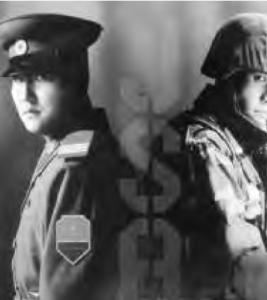
Direction (Kim Sang-Man), the 38th Grand Bell Awards. Winner, Audience Award, Best Picture, Best Actor (Song Kang-Ho), Deauville Asian Film Festival. Winner, Best Cinematography, Kim Seong-Bok, 21st Chongryong Awards Runner-Up, Best Picture, Seattle International Film Festival.
Still Photos: © 2001 Cineline Corporation, Myung Film Company, Ltd.
JOINT SECURITY AREA tells the story of two South Korean border guards who become friends with their two North Korean counterparts. They are able to maintain their friendship covertly until a North Korean officer catches them meeting in the North Korean border house. The story is told in both present time and flashback while a neutral investigator tries to determine what started a shoot-out between the North and South Korean soldiers.
Swiss Major Sophie Jean,10 a lawyer with the Neutral Nations Supervisory Commission, is sent to investigate the shootings because the depositions of the soldiers are different. South Korean Sergeant Lee Soo Hyuk claims he was kidnapped while relieving himself in the woods. He was injured while escaping the North Korean border house, and a gun battle began when more soldiers arrived at the scene. In contrast, North Korean Sergeant Oh Kyung Pil stated in his deposition that Lee stormed into the border house and started shooting. All that Jean knows for sure is that two North Korean soldiers were killed in their own border house.
The viewer learns through flashbacks that Lee meets Oh and Private Jung Woo Jin when Lee steps on a landmine and is found by Oh and Jung. Oh dismantles the mine and lets Lee go home. Lee and Oh begin to secretly exchange letters, and then Jung joins in and invites Lee over as a joke. Lee, not thinking the invitation is a joke, visits and continues to do so on a regular basis. He eventually invites his border house partner, Private Nam Sung Shik.
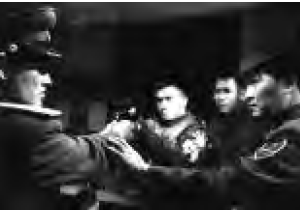
Their friendship grows through these visits, exchanges of gifts, and playing of games. However, the soldiers are eventually put on alert, and Lee realizes it is becoming too dangerous for them to keep visiting. Lee will be discharged soon, so Lee and Nam decide to make one last visit for Jung’s birthday. During the visit, a North Korean officer walks in and catches them together. Oh tries to convince his superior that Oh and Jung are attempting to persuade Lee and Nam to defect to the North. When the officer is surprised by the sound of music, he reaches for his gun, but Lee is faster and he shoots the officer. A nervous Jung shoots Lee and Lee returns fire. Oh takes Lee’s gun and kills Jung.
During an interrogation by Jean’s associate, Nam tries to commit suicide by jumping out a window. Later, and just after a meeting with Jean, Lee steals a gun and succeeds in committing suicide. Oh is to be discharged.
JSA is complicated to follow because the soldiers tell different stories and the film jumps between past and present. However, it also tells a story about friendship, but differently from Shini.
Friendship is the key element here. The four soldiers become friends despite their national loyalties. Oh is a veteran of combat who teaches the men how to be soldiers. Lee is a jokester whose lies gain him a tough-guy reputation from his fellow soldiers. For example, he tells the soldiers he dismantled the mine himself. When he throws an object with a note attached that breaks the window, instead of saying that he was trying to send a note to his friend, he claims the North Korean guards cursed the Southern president so he threw a rock to break their window. Jung is a good artist and a bit stupid. Nam is also somewhat stupid but is a giving person. Jung and Nam are very much alike, and Oh sees a younger version of himself in Lee.

The movie suggests that friendship between individuals is the way to bridge the problems between countries. It is human compassion that initially brings Oh and Lee together. Despite their abnormal situation they do normal things, such as arm wrestling, shining boots, and having a birthday party. Lee and Nam bring their friends moon cakes, a popular festival sweet in the South that is hard to get in the North. The cakes show their common heritage: most Koreans eat them to celebrate the harvest festival.
The role of Major Jean shows the problem with establishing the friendship. She is a good person but an inexperienced investigator. Jean is making her first trip to Korea, even though her father is Korean. She learns at the end of the movie that the South does not want her to investigate because her father was a North Korean officer who left a POW camp, moved overseas, and married a Swiss woman. Even though Jean is a citizen of a neutral nation, she cannot escape her family’s past. She realizes the soldiers had become friends, but there is nothing she can do to help them. Her investigation leads to one suicide attempt and one successful suicide. The characters cannot escape the present—or even the past.
COMPARISON OF FILMS
Both Shini and JSA suggest ways to reunite the two Koreas. The former suggests love and the latter friendship. Shini offers a negative representation of North Koreans and politicians in general. It is the rare North Korean soldier who is able to overcome his or her hate for the South. In contrast, JSA argues that there is a bond between the North and the South that cannot be broken. The people are inherently similar; but it is the social conditions that differ.
There is the bond between men in both movies. Shini presents the bond between Ryu and Lee, and Park even feels an adversarial bond between himself and Ryu. JSA portrays the bond among Lee, Oh, Nam, and Jung. These films follow the tradition of the buddy action movie, which requires men to risk their lives for their close male friends.
In contrast, the inclusion of women causes turmoil. Hee’s transformation to Hyun in Shini causes problems between Lee and Ryu, and ultimately leads to Lee’s death. Hee is a gray area in an otherwise black-and-white world for Ryu, Lee, and Park. The inclusion of Jean in JSA also leads to problems. Her investigation pushes the men to deal with their friendly but shameful relationship with the enemy. Lee shoots himself when he has to accept the fact that he killed his friend Jung, which is the image he sees when he is about to die from a self-inflicted bullet.
APPLICATIONS FOR THE CLASSROOM
Instructors may use these films to discuss contemporary Korea. They are starting points for a thorough investigation by advanced students, whose responses will vary based on their own knowledge base, perspectives, and film experiences.
Shini and JSA will not entertain everybody, and the action in both films may be too violent for some. However, those old enough to watch it can get a sense of the wide-spread desire of many Koreans to have a unified nation. It is apparent from these two films that people have to get beyond prejudices that exist because of propaganda and fear. It is easy to get the feeling that if politicians did not exist, people from the two Koreas could get along much better. The hope for a reunified Korea does not rest with the politicians, but with people expressing the desire to befriend their enemies.
I used both films in my introductory mass communication class, which normally has more than 100 students. The students tend to be freshman and sophomores with an occasional junior. They viewed Shini via a projected computer screen playing a video compact disk, and JSA has been projected via a DVD player. I have experimented with different forms of response, both verbal and written. Verbal responses after viewing can lead to interesting debates, but usually only a small number of students are brave enough to speak up. Classes that are normally very participatory are able to effectively utilize a verbal response feedback. However, when a class is typically non-participatory, then a written response usually works better.
I normally ask my students to respond to questions such as: What difficulties did you encounter watching this film? What did you like about this film? How is it different than the American films you normally watch? What did you learn about Korea from this film?
There are some fairly common responses to the cultural and political aspects of these films. Students admit in writing, but not usually verbally, that they had trouble telling the characters apart because of visual similarities. Students are surprised by the personal honor characters display. They see how polarized the politics of separation are in the Koreas. Many students fear that a lack of communication will lead to violence, and they state that they did not realize how tense the political situation is in the Koreas.
There are also some comments about the film-making that appear with regularity. While watching JSA, students have trouble telling if the scene is set in North or South Korea. This problem is not prevalent in Shiri because it is primarily set in South Korea. Students like JSA’s quick cuts, American-style action, and its similarity to the mystery genre. They enjoy Shiri’s action, and that the plot is non-sappy, but romantic. Students are impressed by the actresses’ prominent roles in both films. However, students have trouble keeping up with the subtitles of both films because of their fast-paced action. In addition, students also have trouble understanding the occasional English spoken by the characters, since the accents were too thick for easy comprehension.
JSA and Shiri can be shown in classes other than mass communication, which will naturally change what is empasized in the films. The film students in my classes focus much more on lighting, the structure of flashback scenes, and cinematography. Political science classes will appreciate the concept of mediation in JSA. Women’s studies classes will be interested in the prominent roles women have in both films. Asian studies courses can compare the films to news stories to see how they differ from people’s own experiences.
Here are some final observations based upon my use of these, and other foreign films in the classroom. Undergraduates often see Cold War issues in black-and-white terms, which is surprising because of their age. I really expected that students, because they were so young during the Cold War, would be more tolerant of former and current Communist countries. The most striking responses occur when context is not given before a showing. Written or immediate verbal responses show student biases pretty clearly, especially against former Communist countries they really know little about. Also, when clips of these films are shown to my Midwestern students in a media class, they often refer to the films as Japanese or Chinese. The students are so accustomed to identifying Asian as Japanese or Chinese that short exposure to Korean culture does not register with many undergraduates.
The success of JSA and Shiri will lead to the production of similar films. If South Korean films succeed at the box office, American movie companies are more likely to distribute them in the United States. The importation and exhibition of these films to the general public should increase interest in Korean and Asian culture, as well as help to strengthen Asian studies in schools and universities. JSA and Shiri might someday be seen as the beginning of the growth of South Korean cinema in the United States.
NOTES
1. Francesco Casetti, Theories of Cinema, 1945–1995 (Austin: University of Texas, 1999), 124 –126.
2. For more information see: Robert C. Allen and Douglas Gomery, Film History: Theory and Practice (New York: Alfred A. Knopf, 1993).
3. David E. James and Kyung H. Kim, eds. Im Kwon-Taek: The Making of a Korean National Cinema (Detroit: Wayne State University Press, 2002), 10.
4. For example, see McHugh and Rist.
Kathleen A. McHugh, “South Korean Film Melodrama and the Question of National Cinema,” Quarterly Review of Film & Video 18 (2001): 1–15. Retrieved July 8, 2002 from Ebsco.
Peter Rist, “An Introduction to Korean Cinema,” Offscreen October 16, 1998. Retrieved July 8, 2002 http://www.horschamp.qc.ca/9810/offscreen_essays/ korean.html.
5. James and Kim, 19.
6. See Hyangjin Lee, Contemporary Korean Cinema: Identity, Culture and Politics (Manchester, UK: Manchester University Press, 2000).
A new book that offers another overview of Korean film history is: Eungjun Min, Jinsook Joo and Han Ju Kwak, Korean Film: History, Resistance, and Democratic Imagination (Westport, Conn.: Praeger Publishers, 2003).
For a general reference book on Korea: Sonja Vegdahl Hur and Ben Seunghua Hur, Culture Shock: Korea (Portland, Ore.: Graphic Arts Publishing Co., 1992). Also: John H. Koo and Andrew C. Nahm, An Introduction to Korean Culture (Seoul: Hollym International Corporation, 2000).
7. See Suh and Nakarmi; Havis. No page numbers due to online retrieval.
Sangwon Suh and Laxmi Nakarmi, “North and South: The Movie,” Asiaweek October 6, 2000. Retrieved July 8, 2002 http://www.asiaweek.com/asiaweek/ magazine/ 2000/1006/ nat.kor.html.
8. Havis. No page numbers due to online retrieval.
Richard J. Havis, “Korea’s Censors Get Tough,” Asiaweek December 5, 1997: Retrieved July 8, 2002 http://www.asiaweek.com/asiaweek/97/1205/ feat3.html.
9. Nakarmi. No page numbers due to online retrieval.
Laxmi Nakarmi, “A Whale of a Tale.” Asiaweek April 30, 1999. Retrieved July 8, 2002 http://www.asiaweek.com/asiaweek/99/0430/feat7.html.
10. The subtitles spelled her last name Jean, while the trailer spelled it Jang
WORKS CITED
Allen, Robert C. and Douglas Gomery. Film History: Theory and Practice. New York: Alfred A. Knopf, 1993.
Casetti, Francesco. Theories of Cinema, 1945–1995. Austin: University of Texas, 1999.
Havis, Richard J. “Korea’s Censors Get Tough.” Asiaweek December 5, 1997: 56. Retrieved July 8, 2002 http://www.asiaweek.com/asiaweek/97/1205/ feat3.html.
Hur, Sonja Vegdahl and Ben Seunghua Hur. Culture Shock: Korea. Portland, Ore.: Graphic Arts Publishing Co., 1992.
James, David E. and Kyung H. Kim, eds. Im Kwon-Taek: The Making of a Korean National Cinema. Detroit: Wayne State University Press, 2002.
Koo, John H. and Andrew C. Nahm. An Introduction to Korean Culture. Seoul: Hollym International Corporation, 2000.
Lee, Hyangjin. Contemporary Korean Cinema: Identity, Culture and Politics. Manchester, UK: Manchester University Press, 2000.
McHugh, Kathleen A. “South Korean Film Melodrama and the Question of National Cinema.” Quarterly Review of Film & Video 18 (2001): 1 –15. Retrieved July 8, 2002 from Ebsco.
Min, Eungjun, Jinsook Joo, and Han Ju Kwak. Korean Film: History, Resistance, and Democratic Imagination. Westport, Conn.: Praeger Publishers, 2003.
Nakarmi, Laxmi. “A Whale of a Tale.” Asiaweek April 30, 1999. Retrieved July 8, 2002 http://www.asiaweek.com/asiaweek/99/0430/feat7.html.
Rist, Peter. “An Introduction to Korean Cinema.” Offscreen October 16, 1998. Retrieved July 8, 2002 http://www.horschamp.qc.ca/9810/offscreen_essays/ korean.html.
Suh, Sangwon and Laxmi Nakarmi. “North and South: The Movie.” Asiaweek October 6, 2000. Retrieved July 8, 2002 http://www.asiaweek.com/asiaweek/ magazine/2000/1006/ nat.kor.html.

